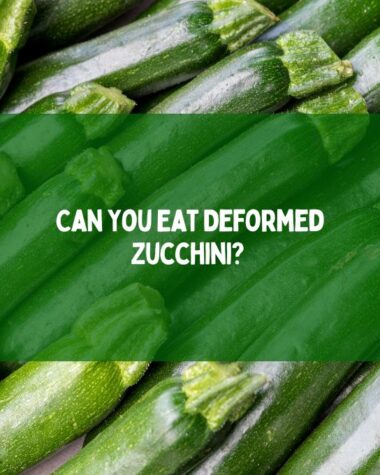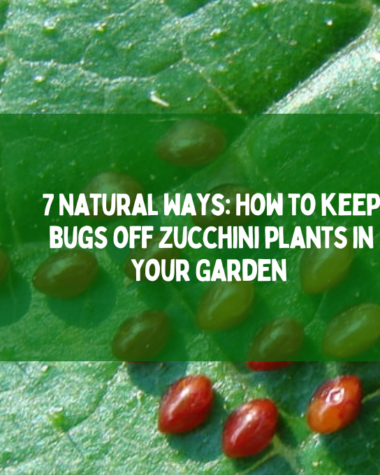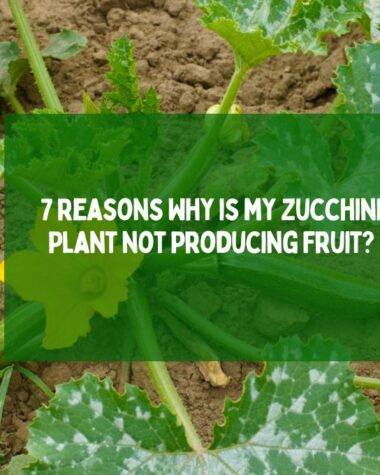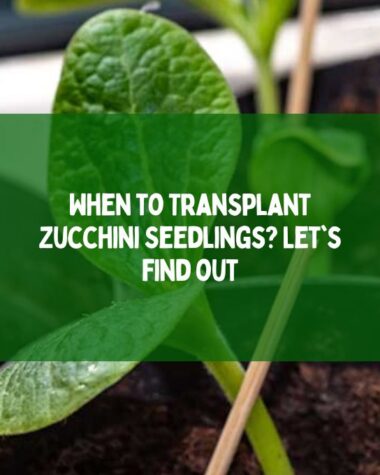Bumpy zucchini refers to a type of zucchini that has an irregular surface with bumps and ridges. It is not a specific variety of zucchini but rather a natural occurrence that can happen with many types of summer squash, including zucchini.
Bumpy zucchini can develop for a number of reasons, including the way the vegetable grows, environmental conditions like overwatering or excessive heat, and the genetic makeup of the plant. Despite its appearance, bumpy zucchini is perfectly safe to eat and can have a tender and flavorful texture
Reasons why zucchini have bumps?
There are a few possible reasons why your zucchini may be bumpy:
- Variety: Some varieties of zucchini are naturally bumpy, so it may just be a characteristic of the type of zucchini you are growing or purchasing.
- Poor pollination: Zucchini plants rely on pollination by bees or other insects to produce fruit. If the pollination process is incomplete or uneven, it can result in bumpy or misshapen fruit.
- Environmental stress: Extreme heat or cold, drought, or other environmental stressors can affect the growth and development of zucchini fruit, resulting in bumps or other irregularities.
- Pests or disease: Certain pests or diseases can also cause bumpy or deformed zucchini fruit, so it’s important to keep an eye out for signs of infestation or infection and take appropriate measures to control them.
In most cases, bumpy zucchini is still perfectly edible and can be used in the same way as smooth zucchini. However, it’s best to throw away the fruit if there are additional indications of deterioration or damage along with the bumps.
Causes of bumpy zucchini
What causes the bumps on my zucchini, and how can I get rid of them? Most of the time, bumpy zucchini are a sign that the plant has one of the more serious diseases that can affect it.
One of the many plant viruses that cause these diseases can’t be cured. The cucumber mosaic virus, the watermelon mosaic virus, the papaya ringspot virus, the squash mosaic virus, and the zucchini yellow mosaic virus could all be to blame for this.
Indicating bumpy zucchini
The skin of a rotting zucchini is dead and dull, which makes it easy to spot. You shouldn’t eat zucchini that has spots of mold or other signs that it is going bad.
The squash of the vegetable might be soft, and the outside might look wrinkled or dried out. When you cut into a rotten zucchini, the squash inside might be stringy and full of big seeds.
Related Reading:
What do mosaic viruses really do?
Zucchini, cucumber, and melons can get a number of mosaic viruses. Aphids and cucumber bugs, the oil and dirt on people’s hands and tools, contaminated seed, and disease-carrying insects can all spread viruses.
Infected plants will have leaves that are puckered or twisted and a pattern made up of different shades of green, both dark and light. When viruses attack fruit, it often has strange color patterns, and ring lines, and is misshapen.
How do you prevent zucchini bumps?
Virus-infected zucchinis are untreatable. If you’ve lost seeds to viruses, you can take measures when sowing. Once infected, zucchini can’t be saved.
Aphids and cucumber bugs spread many plant ailments. Sick plants from tainted seeds can spread viruses. Don’t keep zucchini seeds if you don’t know if the mother plant is diseased. Instead, get trusted, virus-free seeds.
Sowing zucchini plants directly may shield them from virus-carrying bugs. You’ll have more time to lay down mirrored grass and arrange covers. Keep an eye out for garden bug pests. Controlling your plants prevents zucchini pathogens from spreading to your yard. Weeds and filth attract disease-carrying insects.
Virus-infected plants should be removed immediately to prevent further spread. Start by moving or pruning the healthiest zucchini vines. Dirty tools or attire can spread plant bugs to healthy plants.
Can you eat Bumpy Zucchini or yellow bummy Zucchini?
Yes, it is possible. Pick yellow zucchini before they get to that point to enjoy them at their best, because as they grow, they will get more spines.
So it’s normal for your yellow zucchini to have bumps on its skin. Instead of waiting until the squash is old and “woody,” choose it while it is still young and soft. When the squash is thick enough to pierce with your fingernail, it is ready to eat.
Conclusion
In conclusion, bumpy zucchini is a natural occurrence that is nothing to worry about. Whether you are growing your own zucchini or purchasing it from a local farmer, it is important to remember that the appearance of the vegetable has no bearing on its taste or nutritional value.
So the next time you come across a bumpy zucchini, don’t be afraid to give it a try. You might just discover a new favorite variety!







